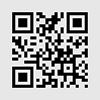
7
GB
• Connect the red cable to the post marked positive
(+) on the back panel of the inverter. Connect the
red battery clip to the positive (+) terminal of the bat-
tery.
• Check that all the connections between battery clips
and terminals are secure
CAUTION:
Loose connections may cause overheated wires and
melted insulation. Check to make sure you have not
reversed the polarity.
Connection to load
The inverter is equipped with a standard AC household
type socket. Plug the cord from the appliance you wish
to use into the socket. Make sure that the combined
load requirement of your equipment does not exceed
the rated watts.
The inverter is engineered to be connected directly
to standard electrical and electronic equipment in the
manner described above. Do not connect the power
inverter to household or recreational vehicle AC distri-
bution wiring .Do not connect the inverter to any AC
load circuit in which the neutral conductor is connected
to earth or the negative of the DC (battery) source.
WARNING:
Never connect to AC distribution wiring.
CAUTION: RECHARGEABLE APPLIANCES
Certain rechargeable devices are designed to be re-
charged by plugging them directly in to a household
socket. This type of device must never be used in the
inverter. The device will damage the inverter. Do not
use the inverter to recharge items that can be plugged
directly into a household socket. This problem does not
occur with the vast majority of battery-operated equip-
ment. Most of these devices use a separate charger
or transformer that is plugged into an AC household
socket. The inverter is easily capable of running most
chargers and transformers.
POSITIONING THE INVERTER
For best operating results, the inverter should be
placed on a
fl
at surface such as the ground, car
fl
oor
or seat, or another solid surface. The unit is equipped
with a 1 meter-power cord for easy positioning. The in-
verter should only be used in locations that meet the
following criteria.
• Dry : do not allow water or liquids to come into con-
tact with the inverter
• Cool: ambient air temperature should be between
-1 º
С
non-condensing, and 40 º
С
. Do not place the
inverter on or near a heating vent or any equipment,
which is generating heat above room temperature
keep the inverter out of direct sunlight.
Ventilated: keep the area surrounding the inverter clear
to ensure free air circulation around the unit. Do not
place items on or near the unit whilst it is operating. A
fan is helpful if the unit is operating at maximum power
outputs for extended periods of time. If the internal tem-
perature of the inverter exceeds 90 º
С
the inverter will
shut down and restart when it has cooled.
The modi
fi
ed sine wave produced by the inverter has
an RMS (root mean square) voltage, which is the same
as standard household power. Most AC voltmeters
(analog and digital) are sensitive to the average value
of the waveform rather than the RMS value. They are
calibrated for RMS voltage under the assumption that
waveform measured will be a pure sine wave. Voltme-
ters will not read the RMS voltage of a modi
fi
ed sine
wave correctly. The reading will be around 20-30 volts
too low when measuring the inverters output.
INSTALLING THE INVERTER
Power source requirements
The power source for the inverter must provide be-
tween 11 and 15 volts DC and must be able to supply
the necessary current to operate the load. The power
source may be a battery or a well regulated DC power
supply. To obtain a rough estimate of the current in
Amps the power source must deliver simply divide the
power consumption of the load by 10.
Example: If a load is rated at 700 watts AC, the power
source must be able to deliver 700 by 10=70Amps.
CAUTION:
The inverter must be connected only to batteries with a
nominal output voltage of 12 volts. The inverter will not
work if connected to a 6 volts battery and will sustain
permanent damage if connected to a 24 volts battery.
Connecting to the power source
The inverter is equipped with a cigarette lighter plug
and battery clip cables (Inverter of 150 watts output
without battery clip cables) for connection directly to
the power source.
Using the fused cigarette lighter plug
The cigarette lighter plug is suitable for operating the
inverter at power outputs up to 150 watts. The tip of the
plug is positive and the side contact negative. Connect
the inverter to the power source by
fi
rmly inserting the
cigarette lighter plug into the cigarette lighter socket.
CAUTION:
Connect directly to battery or power source when
operating above 150watts.
NOTE:
Most vehicle cigarette lighter circuits use fuses rated at
15 to 20 amps or greater. To operate at full output use
the battery clip cable.
Connecting to a power source using provided ca-
bles
If the inverter is to be used for extended periods at
power levels above 150 watts, direct connection to the
power source is required. Use the leads provided to
connect directly to the 12-volt power source using the
following guidelines
• Check that the inverter is switched off and no
fl
am-
mable fumes are present
• Connect the black cable to the post marked nega-
tive (-) on the back panel of the inverter Connect the
black clip to the negative (-) terminal the battery
